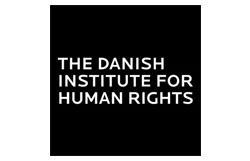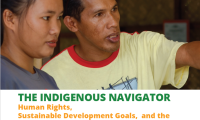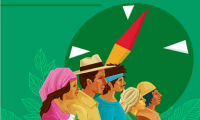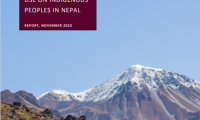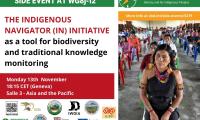National Human Rights Institutions learn about indigenous rights in the context of the SDGs
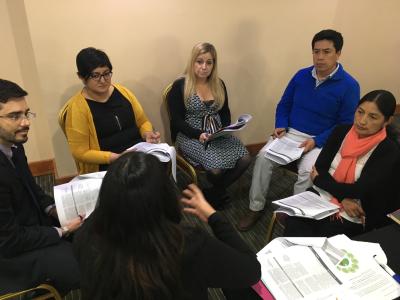
INTERVIEW with Sille Stidsen, Senior Advisor on Human Rights and Development from the Danish Institute for Human Rights on the relevance of collaborating with National Human Rights Institutes (NHRI) to monitor the implementation of the rights of indigenous peoples.

As partner of the Indigenous Navigator Initiative, the Danish Institute for Human Rights, has been responsible for training and guidance of National Human Rights Institutions in the use the Indigenous Navigator framework and tools. During 2017, she has organized regional trainings in Thailand, Chile and Kenya. We have interviewed her on the lessons learned from training National Human Rights Institutions in using the Indigenous Navigator and raising awareness on the importance of building alliances with indigenous peoples in Latin America, Asia and Africa.
Q: How can NHRI’s use the Indigenous Navigator, and why is it important for indigenous peoples to engage with them?
S: For us it has been a way of presenting the Indigenous Navigator tools as an innovative way of monitoring Indigenous Peoples´ rights nationally, and of raising awareness about the huge potential in using them as an instrument for gathering data, and documenting the reality on the ground for indigenous peoples.
NHRIs are the link between civil society and government institutions, which makes NHRI an important ally for indigenous peoples in advocacy processes on the protection of their rights , especially in securing indigenous peoples´ visibility in national SDG planning and programmes. The NHRI can thus create a link between the local and the national level, which again has the potential to link actors to global processes in the context of the SDGs on a global level.
The linkages between the local/global is an inherent component of the work of the Indigenous Navigator Initiative, with the simultaneous trainings of indigenous peoples in the communities, on how to use the navigator tools to produce community-based data to assess the implementation and realization of indigenous peoples’ rights at national and local level, in the eleven countries we work in so far.
Q: Why are NHRI an important partner for the Indigenous Navigator Initiative and for Indigenous Peoples?
S: The NHRI can be and are a crucial point of entry for indigenous peoples in their demand for the fulfillment and promotion of their self identified human development needs and rights. The idea of training NHRI in using the tools, has therefore worked as an efficient means of addressing national institutions and civil society about the importance of including indigenous peoples as partners/change agents in the context of the 2030 Agenda. Indigenous peoples need to build alliances across all sectors in society in their efforts to raise awareness of indigenous peoples rights and concerns nationally, and their implementation gaps on the ground, in particular.
Q: What have been the reactions from the training sessions with NHRI?
S: So far, the reactions have been very positive, and many of the NHRI invited for the trainings see themselves using the Indigenous Navigator tools in their future work with the SDGS. They perceive the tools as highly relevant for monitoring human rights in general, and as value-adding in the creation of structural, comparable and scalable human rights data.
The NHRI trainings have thus sparked a wish among the different participants to establish a regional collaboration around using the Indigenous Navigator tools as an efficient instrument for assessing the implementation of human rights in the context of their respective countries. Especially, in Latin America, where most countries have ratified ILO’s Convention 169, the NHRIs expressed a continued wish to work with the Indigenous Navigator tools and to establish collaboration around this (gathering indigenous data) in order to improve their documentation, monitoring mechanisms and their national review-processes.
